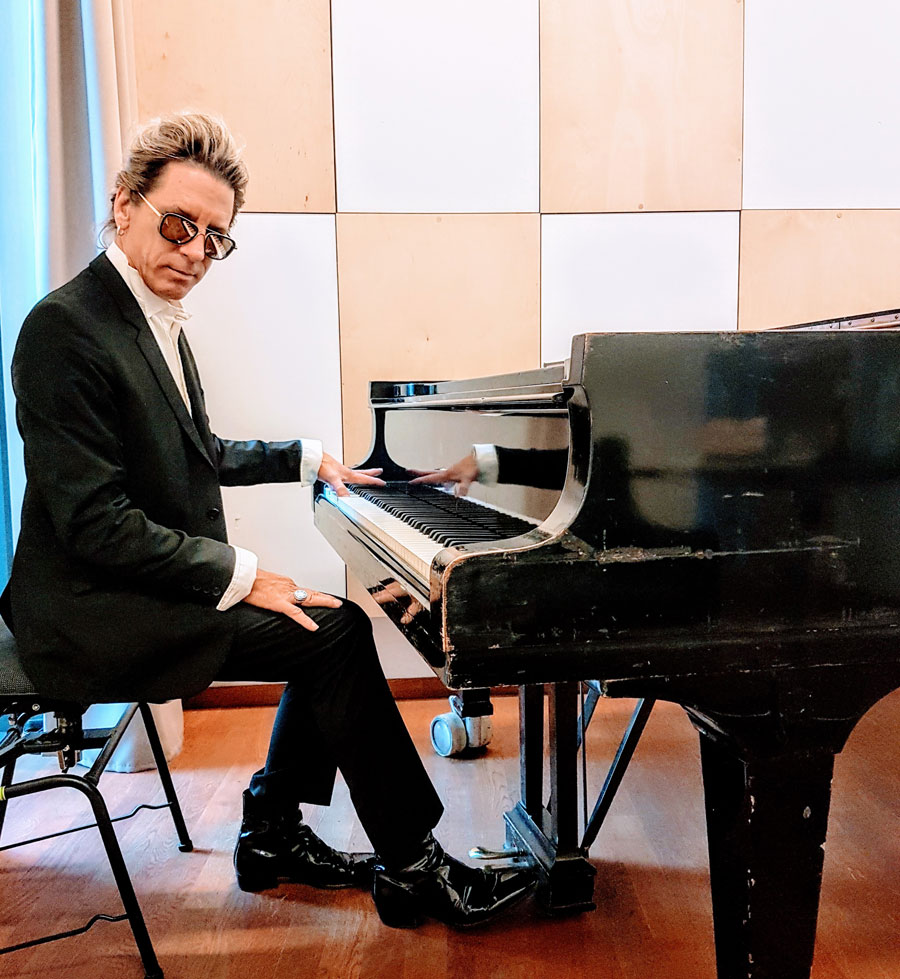His career took root in his time at North Texas from 1976 to 1978.
"Those days were very interesting," he says. "Denton -- it was a sleepy town filled
with old people and wild music and art freaks. The music and art departments were
filled with very interesting and creative young people."
When he arrived, Basinski was trained classically on the clarinet and had played saxophone
for his high school jazz band in Richardson. North Texas was known for the One O'Clock Lab Band and, he says, "I wanted to see if I could get in."
But he got nervous at auditions. And then he heard "those monster cats."
"They were professional musicians coming off the road with Woody Herman and other
big bands who just wanted to play great music and not have to pay stupidity tax for
not having their shoes shined, and to rock," he says. "I had never heard anything
like that."
He switched his major to composition and, living in Bruce Hall, where his fellow dormmates would go through the charts together, he began to develop
his own style.
His private composition teacher was the late Larry Austin ('51, '52 M.M.), the world-renowned composer and director of UNT's Center for Experimental Music and Intermedia -- although Basinski didn't realize how well-known Austin was at the time.
When Basinski brought his work to Austin, the composer told him, "Do more."
Basinski was heavily influenced by artists such as David Bowie. But during an experimental
music class, he discovered composer John Cage, a pioneer of indeterminacy in music,
electroacoustic music and non-standard use of musical instruments.
"This was the first big opening in my mind as someone who was never going to be an
orchestral transcriber or arranger," he says. "It gave me a direction to go in."
Basinski not only found his voice in music, but as a person. He met a group of art
students who "were fabulous and gay, and I found out I wasn't the only weirdo."
One of those fabulous weirdos was artist James Elaine, at the time known as James Erwin Jr. or Jamie ('77), who had graduated the year before with a degree in painting and drawing and
was in town for a visit. They fell in love. Elaine lived in San Francisco, and Basinski
left North Texas to follow his dreams there with Jamie. They've been together ever
since.
Through the years, Basinski recorded music and worked a variety of jobs. They moved
to New York City in 1980 and lived in a loft that received transmissions from a radio
station at the top of the Empire State Building that played American popular standards.
Basinski loved the string sounds, especially the intros and outros, which he made
into tape loops and slowed them down.
"All of a sudden I realized there were these huge waves of melancholy," he says.
Mixing the loops in real time, he recorded them to a cassette with short wave radio
static. And he earned respect as one of the world's top composers of ambient and experimental
music.
